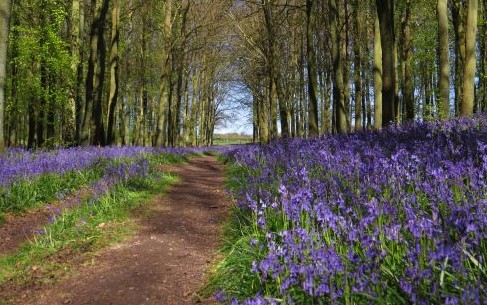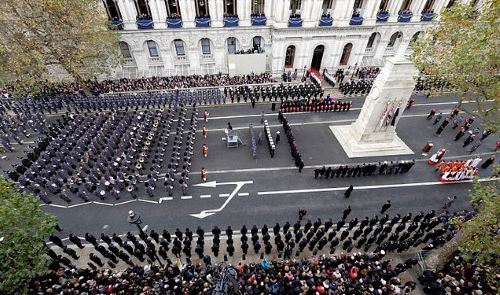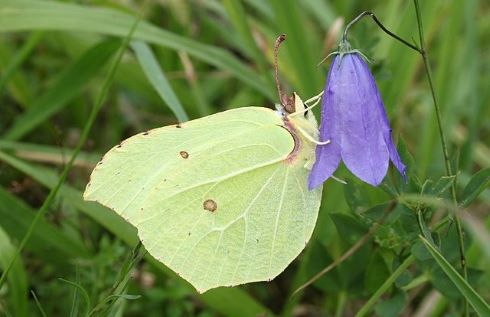Spring into action

The first snowdrops or crocuses of the year are more than just a pleasant sign that spring is here. Tim Sparks and Kate Lewthwaite tell Tom Ireland about the importance of tracking the timing of these seasonal events
20th February 2023
Phenology is the study of cyclic and seasonal biological phenomena. Events such as the date of the emergence of leaves and flowers, the appearance of migratory birds, or the spawning or laying of eggs can be highly sensitive to variations in conditions such as temperature or rainfall. Historic records of when these events occurred can tell us about the climate at a given time in history.
For much of the 20th century the timing of these seasonal events was recorded haphazardly, if at all, often by eccentric amateur naturalists. However, for the past 25 years a project known as Nature’s Calendar has been encouraging citizen scientists to help create a fuller dataset of these events. As part of the project phenologists have also been using a range of other sources to find phenological data from the past, from museum collections and old newspaper cuttings to records from vineyards and flower festivals.
The Biologist spoke to two phenology experts – Tim Sparks and Kate Lewthwaite – to hear more about what modern phenology can tell us about the long-term trends in our changing world.
Sparks is a statistician who founded the UK Phenology Network in 1998 and helped to resurrect Nature’s Calendar, which is now managed by the Woodland Trust. He has co-authored more than 300 publications, particularly on phenology and climate impacts. Lewthwaite is the citizen science manager at the Woodland Trust and helps lead the Nature’s Calendar project on behalf of the trust.
Phenology is not a word that everyone will know – even those working in the life sciences. Given how important it is, why is it so low profile?
TS: It has always been a part of the study of natural history, but the study of natural history has waned since the war. The signs of spring and that sort of thing are no longer taught in every village primary school. The term phenology is not very well known and the Woodland Trust prefers the term ‘nature’s calendar’. The Dutch system is called Natuurkalender for those very same reasons.
KL: Yes, our comms team felt that it was a difficult term – when you type it software likes to change it to ‘phrenology’ or ‘phonology’, so even the spell checkers don’t know what to do with it. Interestingly, I hear there are now plans for a natural history GCSE, which the Woodland Trust very much welcomes.
So why is recording the timing of these seasonal natural events so important?
TS: We can use phenology to show how our environment is changing and how different components of our environment interact with one another. I think what’s particularly relevant now is that phenology shows us the most demonstrable impact of a changing climate. Scientists can talk about an increase in average temperature of a fraction of a degree, but for people in the UK it can be difficult to grasp what that means. Even changing species distributions or populations are unlikely to be detectable unless you’re on the edge of that range.
If you talk about oak trees coming into leaf three weeks earlier, migrant birds coming back much earlier or frogs spawning on a particular date, it has much more relevance to an individual.
Phenology is perhaps the most tangible way of demonstrating that change is happening, and that it can be demonstrated at local, regional and national scales. People care most of all about what is happening locally, and long-term records are necessary to separate the underlying trend from the large year-to-year variability.
KL: As Tim said, it’s about having a reference point. For many years I lived in a house with a pond and the frogspawn always arrived around the time of my birthday, more or less on the 17th March. That was my reference point and I could say: “Oh, the spawn’s a bit early” or “Oh, the spawn’s a bit late”. Or it might be when the snowdrops come out. There’ll be something that helps tie in change with your human experience.
 Phenologists can find seasonal data in a variety of records and historical documents. For example, photographs of the Cenotaph, taken on Remembrance Sunday each year, show the nearby London plane trees in full leaf in some years, or completely bare in others.
Phenologists can find seasonal data in a variety of records and historical documents. For example, photographs of the Cenotaph, taken on Remembrance Sunday each year, show the nearby London plane trees in full leaf in some years, or completely bare in others. It’s a field of natural history and ecology, but presumably it’s also something that’s been observed by people for thousands of years.
TS: Yes, there are some ancient Greek records on the times when certain migrant birds returned and certain plants came into flower. There are records from Kyoto and when its cherry blossom festivals were held dating back to AD 705 – just over 13 centuries. The records are not complete, but they are sufficiently complete from about the time of the Norman Conquest to make very good use of them. You can pick up historic climate trends and things like the major volcanic eruptions, which would have caused a big decrease in temperatures and various ‘years without summers’.
How is modern technology such as satellite imagery and webcams helping phenology? And what are the limitations of a technological approach?
TS: Satellite imagery has opened up the opportunities to study seasonal change at vast scales. But it cannot detect individual species and it is not absolutely clear what aspect of seasonal change (for example, bud burst or full leaf) is being measured. Webcams also offer opportunities for monitoring, but neither of those methods can provide data on long periods in the past that is possible from traditional written records.
Can you give us an example of how an event coming early or late can have serious knock-on effects for an ecosystem?
TS: The oak tree is one of the two dominant species of tree in the UK. In woodland all of those early spring flowers that we appreciate so much – the wood anemones, the bluebells – depend on that early light when these big trees haven’t come into leaf. As soon as they come into leaf, that’s effectively the end of the flowering season for those particular species. The oak tree is probably supporting more insects than any other tree species in the UK, too. There will be birds nesting that rely on the caterpillars feeding on those oak leaves. And the caterpillars have to feed on the oak leaves when the leaves are relatively young before the tannins become too high. And the poor birds have to try to predict in advance when those caterpillars are going to be available to feed their young. So the oak tree is a key species in the British landscape.
KL: The example I would pick is frogspawn, which most people associate with February or March. However, we’ve had the odd frogspawn record now in November. Frogs only have one breeding attempt per year. Once the eggs have hatched and the tadpoles are swimming, they can go into the depths of the pond, but there is a highly vulnerable period. When the spawn is floating on the surface of the water, it is very vulnerable to freezing. One of the impacts of climate change is these very mild spells in winter, so frogs could be particularly affected by that. Frogs predate all manner of invertebrates and are prey for mammals and birds like heron.
Shouldn’t all the species that rely on one another be adapted to stay in sync?
KL: We’ve got evidence that different groups of species respond at different rates to climatic warming – insects fastest, birds slowest and trees somewhere in the middle.
TS: They are often following different cues or they differ in how responsive they are to cues. So, as Kate mentioned, it looks like insects are probably more responsive to temperature, followed by plants and with birds bottom of that list. And even among trees we can show that oak, for example, is much more responsive to rising temperature than ash. And there might be something with ash responding more to sunshine than to temperature, but I think the jury’s still out on that one.
If we settled down to a steady environmental state, things would go back into sync, but how species change between those steady states is not going to be uniform.
The Nature’s Calendar Project records around 150 species and events, but here are Kate’s key spring events for readers to look out for.
• Wood anemone: first flowering
• Chiffchaff: first recorded
• Great tit: first nest building
• Brimstone butterfly: first recorded
• Common frog: tadpoles first seen

Some of the most important phenological records in the UK have come from amateur naturalists. Could you tell me about some of the people who have made significant contributions over many years?
TS: Probably the most important character is Robert Marsham, who started recording what he called 27 ‘indications of spring’ in 1736. He lived for another 60 years and carried on recording over that lifetime. This was continued by successive generations of the same family right up to 1958, and we suspect there are some more recent ones too. That generated a record of about two centuries’ worth of oak leafing dates, spring frog activity dates, snowdrop and wood anemones flowering, and so on. I think his family stopped because people told them that no one was interested in it any longer, because it had gone out of fashion.
More recently our big hero is Jean Combes from Surrey, who’s been recording trees since 1947 or earlier. We have her record of the same oak tree from Ashtead in Surrey, recorded since 1950. It shows this massive advance of about three weeks. We’ve had lots of doubters over the years who say: “Well, all this data is from different recorders in different locations.” But then you have results like Jean’s – one recorder, one location, one single tree – showing such dramatic changes. And she’s still with us, and hopefully will continue to supervise recording for some time to come.
The other way you collect phenological records is by mining other historical resources, some of which you wouldn’t associate with natural history at all. Can you tell us about some of your other sources of information?
TS: Firstly there are museums and herbarium specimens where people have, say, pressed plants, and there’s usually a location and a date. Providing that it’s quite an obvious flower and that it has a short flowering period, then those records can also be used for our purposes.
Then there are historic photographs, such as the pictures of the Cenotaph, which are taken at the same time in November each year, on Remembrance Day. You can see if the London plane trees in the background still have leaves on or not. The oldest pictures you can get from historic archives, the newer ones from modern newspaper sites. It’s the ones in between – from, say, 1950 to 1990 – that are harder to find.
There are vast numbers of flower festivals around the world. There are also parks that only open certain small reserves when a particular plant is flowering, and these dates are often documented somewhere. I have fly fishers’ records that tell me when certain aquatic larvae emerge. I’ve got at least 100 years of those records. Then there’s grape harvests, hop picking, all sorts.
What are the aims of Nature’s Calendar? What do you hope to achieve through it?
KL: It’s about gathering evidence about how things are changing on your doorstep. It’s also about saying there’s something you can do about it. Obviously you can try to reduce your own carbon emissions and plant trees. But actually this is a science that you can help with. It helps people to feel empowered, that they are collecting this evidence to help us better understand change.
TS: After the Second World War there were lots of individuals recording things but in quite an uncoordinated way. Individually, they are not that valuable – with exceptions – but when they come together it can help us understand trends with far more certainty. It’s about trying to encourage people to widen the scope of what they’re recording or bring new people into that recording scheme so they can record what’s going on in their own back yard.
We’re at year 25 of doing this and have data that we can use in isolation from everything else. And that will tell us something. However, you have to keep it going for that long. Monitoring has always been a dirty word right across biology. No one likes it and no one wants to pay for it, yet it is fundamental.
Could you tell me some interesting insights or trends you have gleaned from the Nature’s Calendar data so far?
TS: Long-term recorders, such as Jean Combes, have shown us how much our seasons are changing – perhaps three to four weeks earlier over 75 years. We can also see how spring progresses across the country; typically earliest in the south west and not strictly a south to north trajectory. But the speed and direction of spring is not constant. In late springs it can be much more synchronised across the country and may result in synchronised flowering and a more intensive pollen peak.
How can the readers of The Biologist get involved this spring?
KL: March and April are our busiest recording months, as you would imagine. And the brilliant thing about this issue publishing in February is that we can catch the early sightings – we don’t want readers to be looking for something that’s already happened, because that’s going to skew the data. We record about 150 species and events, and at least 50 of them you could see in March. It’s peak for butterflies and insects emerging, frogs spawning, some garden bird activity such as nest building, and then you’ve got all the tree activity as well.
We always need new recorders – there’s a bit of a skills shortage. Many adults today were not raised with their nature tables, and also the citizen science world is quite crowded. People with these skills are being asked to do lots and lots of different things.
TS: I think that it’s probably quite important that people record what they’re normally going to encounter on a day-to-day basis. So if they’re not anywhere near a particular species, we’re not expecting them to go every two days to some distant part of the county. I’ve always thought that dog-walkers would make the perfect recorders – they walk a transect every day!
Professor Tim Sparks is a visiting professor at the Poznań University of Life Sciences and at the University of Liverpool, a visiting researcher in the Department of Zoology, University of Cambridge, a Hans Fischer Senior Fellow at the Technische Universität München, and an advisor for the UK Phenology Network, which he founded in 1998.
Kate Lewthwaite is the citizen science manager at the Woodland Trust.


